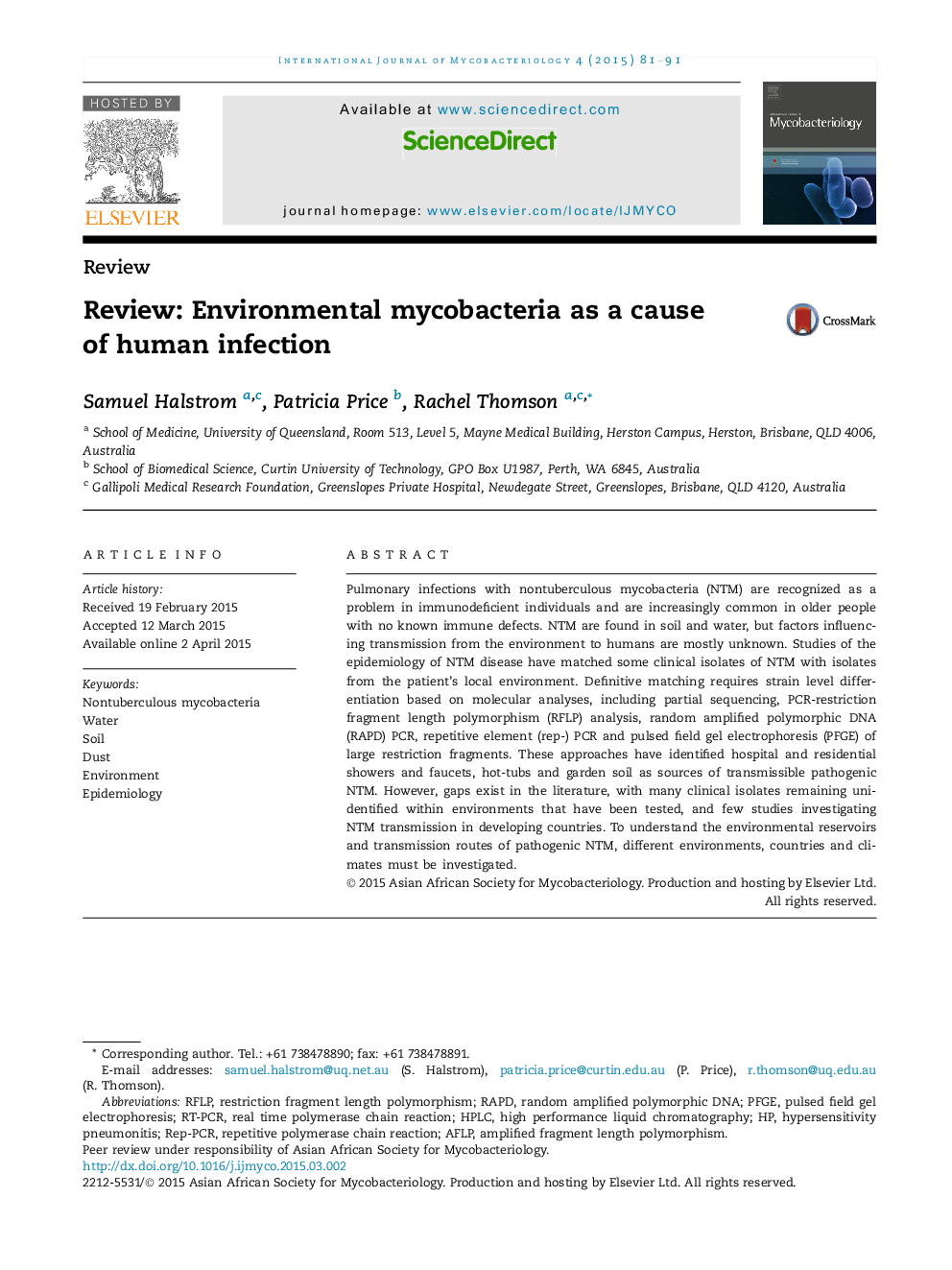| Article ID | Journal | Published Year | Pages | File Type |
|---|---|---|---|---|
| 3405198 | International Journal of Mycobacteriology | 2015 | 11 Pages |
Pulmonary infections with nontuberculous mycobacteria (NTM) are recognized as a problem in immunodeficient individuals and are increasingly common in older people with no known immune defects. NTM are found in soil and water, but factors influencing transmission from the environment to humans are mostly unknown. Studies of the epidemiology of NTM disease have matched some clinical isolates of NTM with isolates from the patient’s local environment. Definitive matching requires strain level differentiation based on molecular analyses, including partial sequencing, PCR-restriction fragment length polymorphism (RFLP) analysis, random amplified polymorphic DNA (RAPD) PCR, repetitive element (rep-) PCR and pulsed field gel electrophoresis (PFGE) of large restriction fragments. These approaches have identified hospital and residential showers and faucets, hot-tubs and garden soil as sources of transmissible pathogenic NTM. However, gaps exist in the literature, with many clinical isolates remaining unidentified within environments that have been tested, and few studies investigating NTM transmission in developing countries. To understand the environmental reservoirs and transmission routes of pathogenic NTM, different environments, countries and climates must be investigated.
